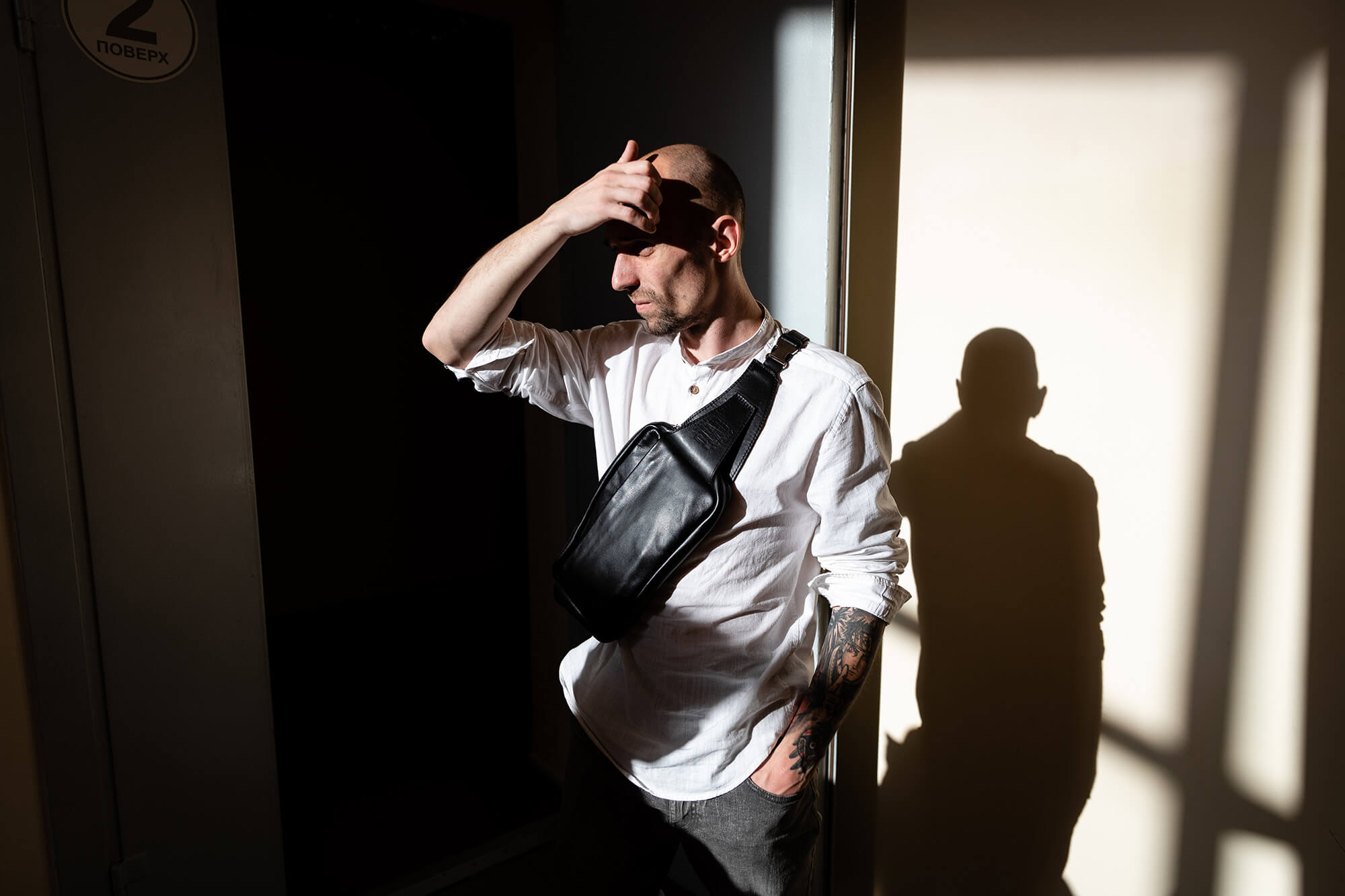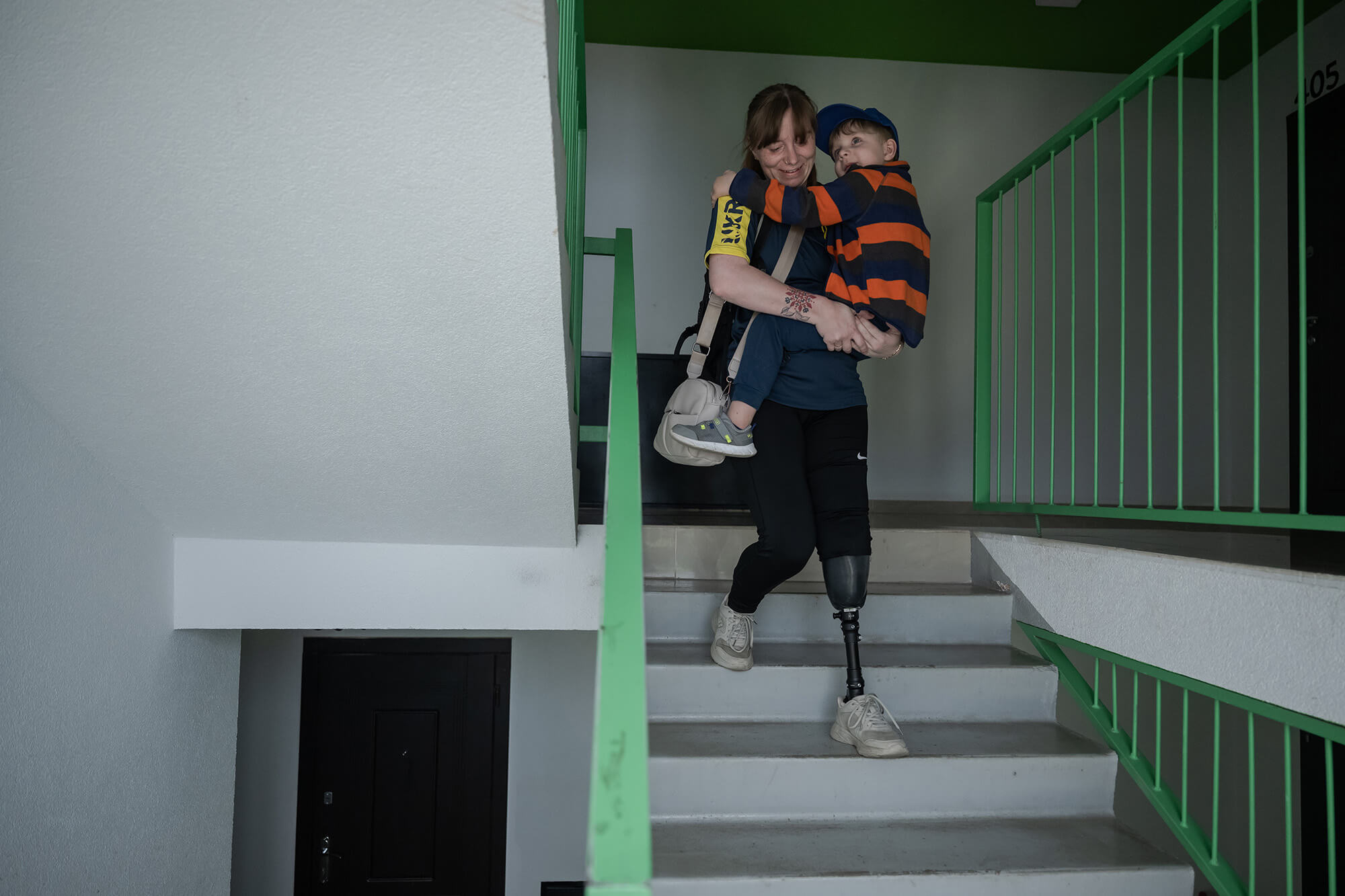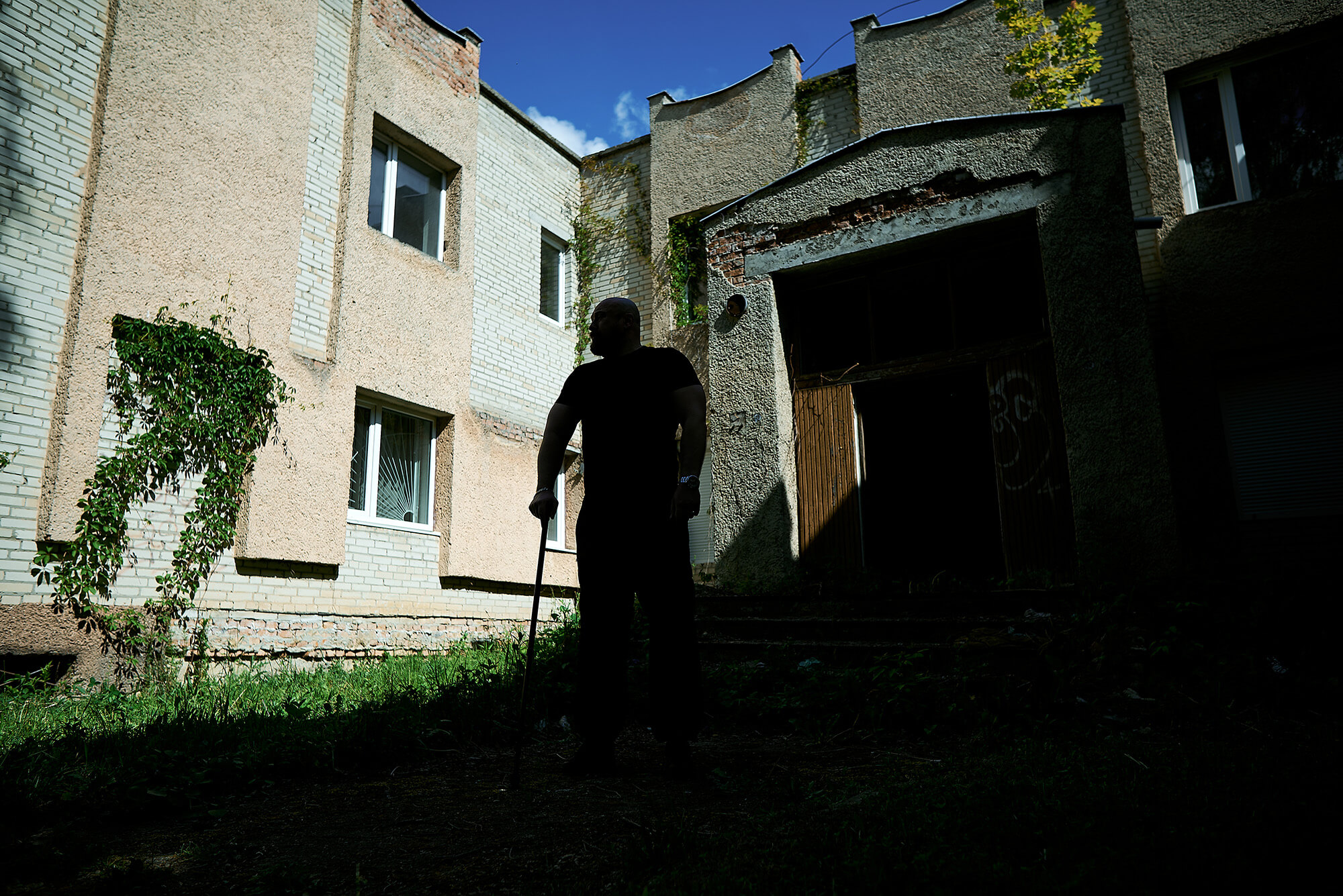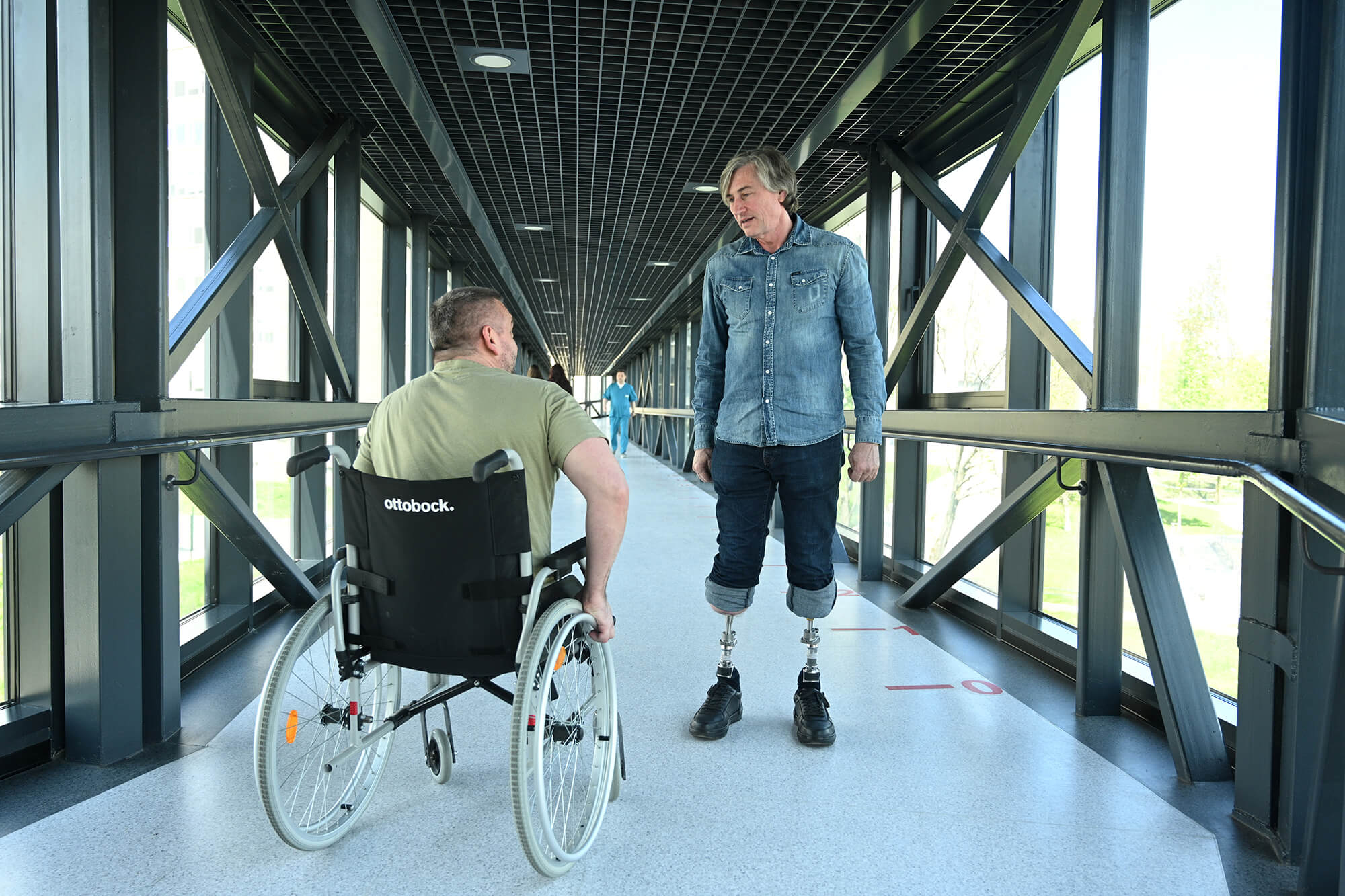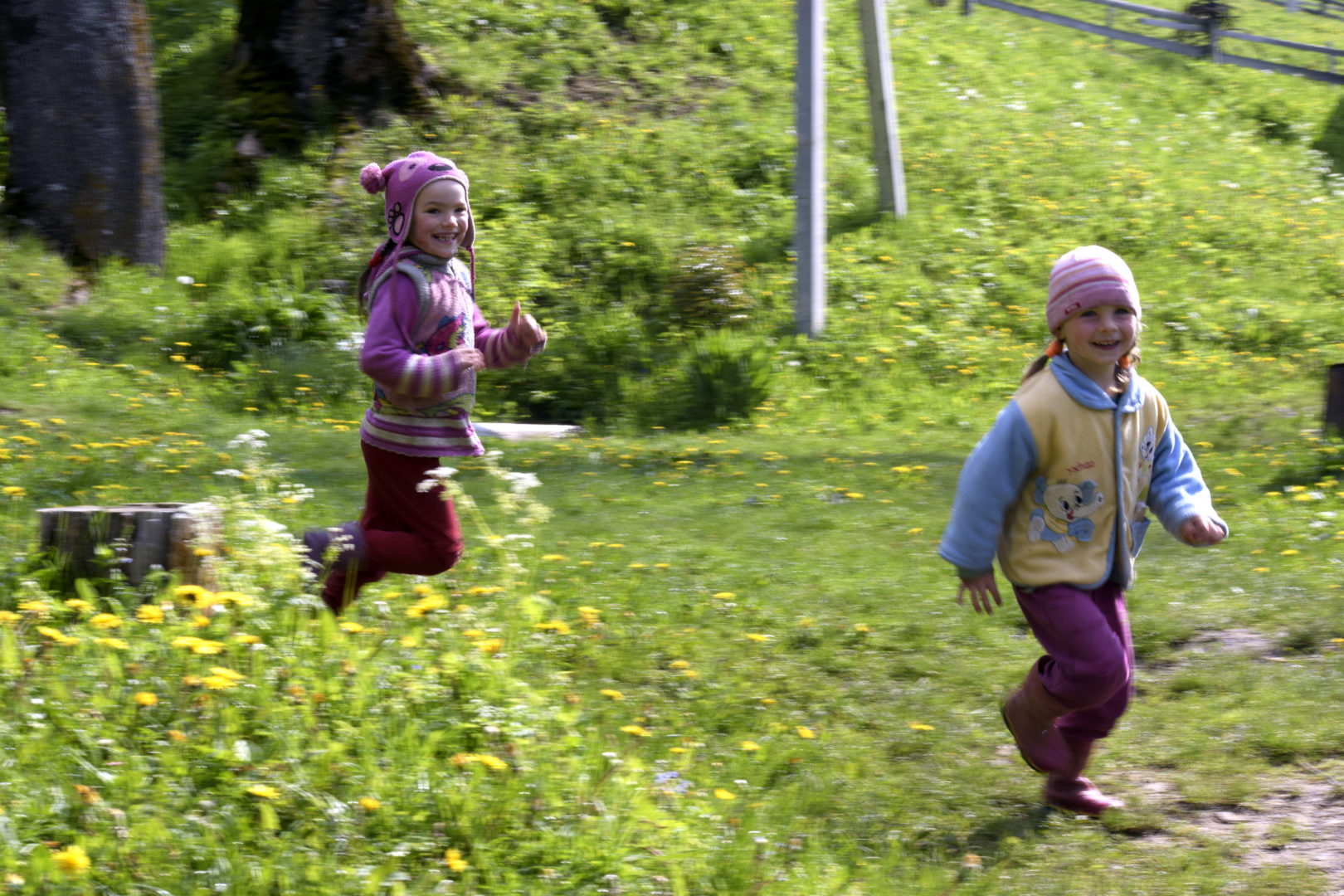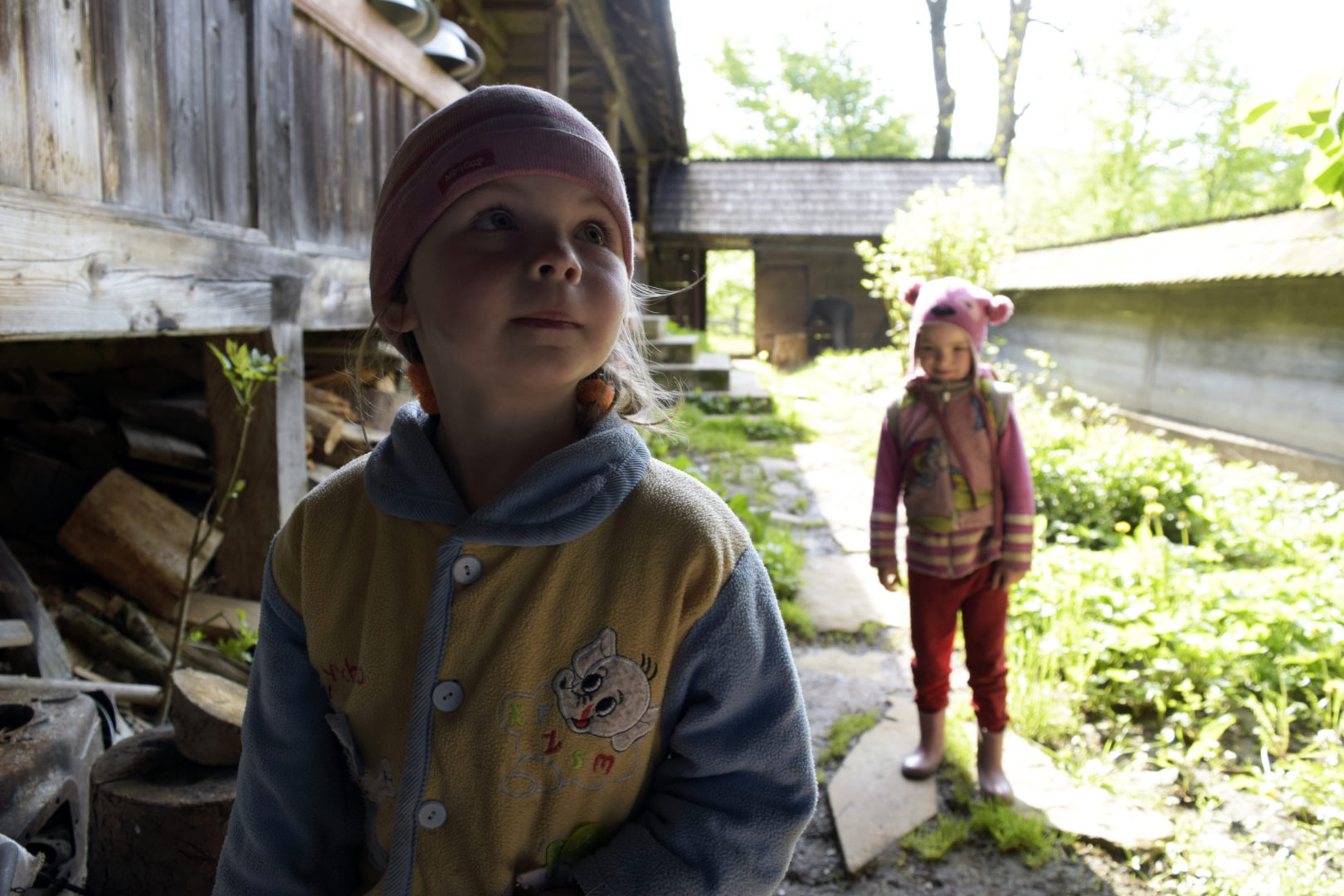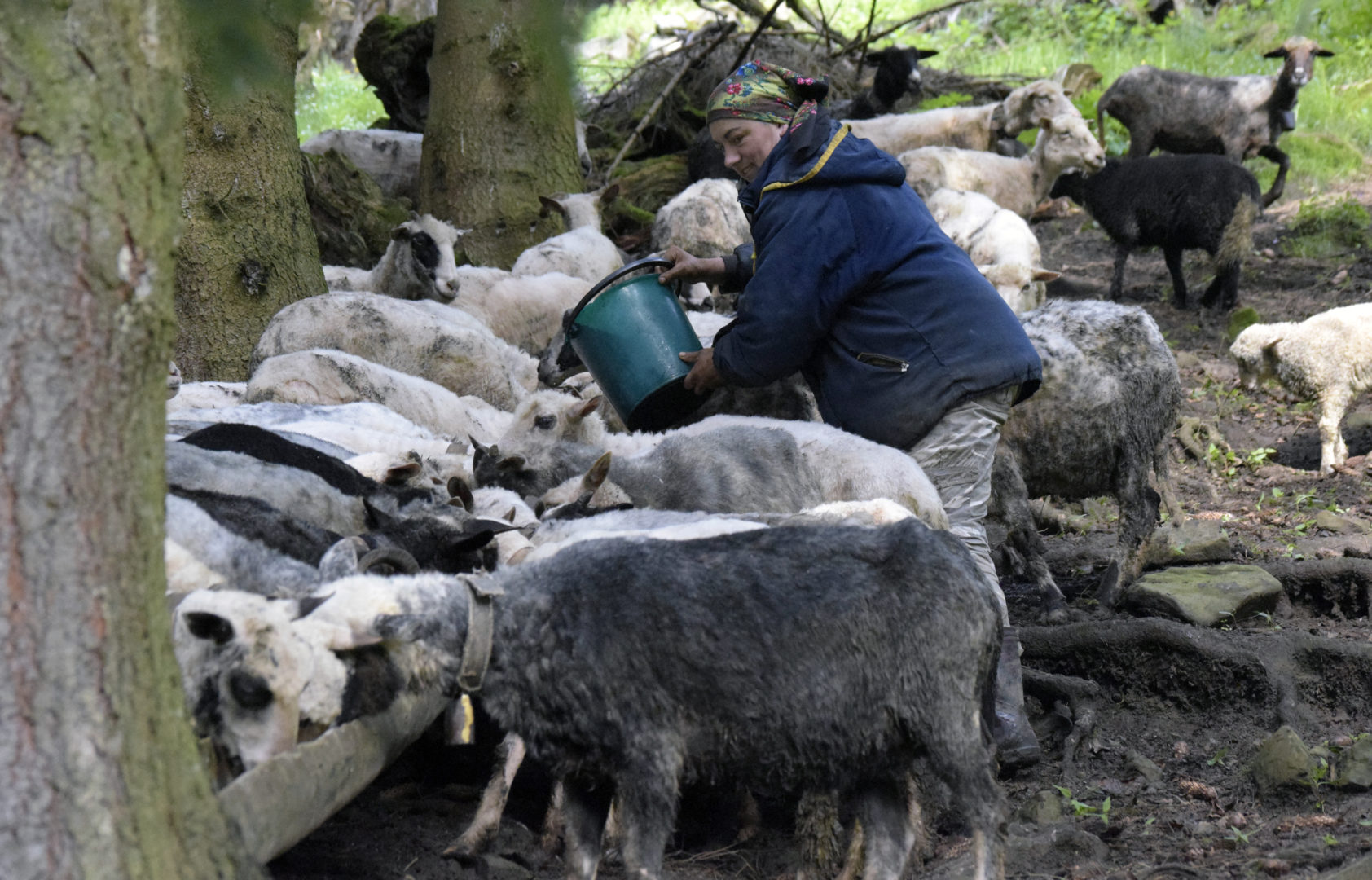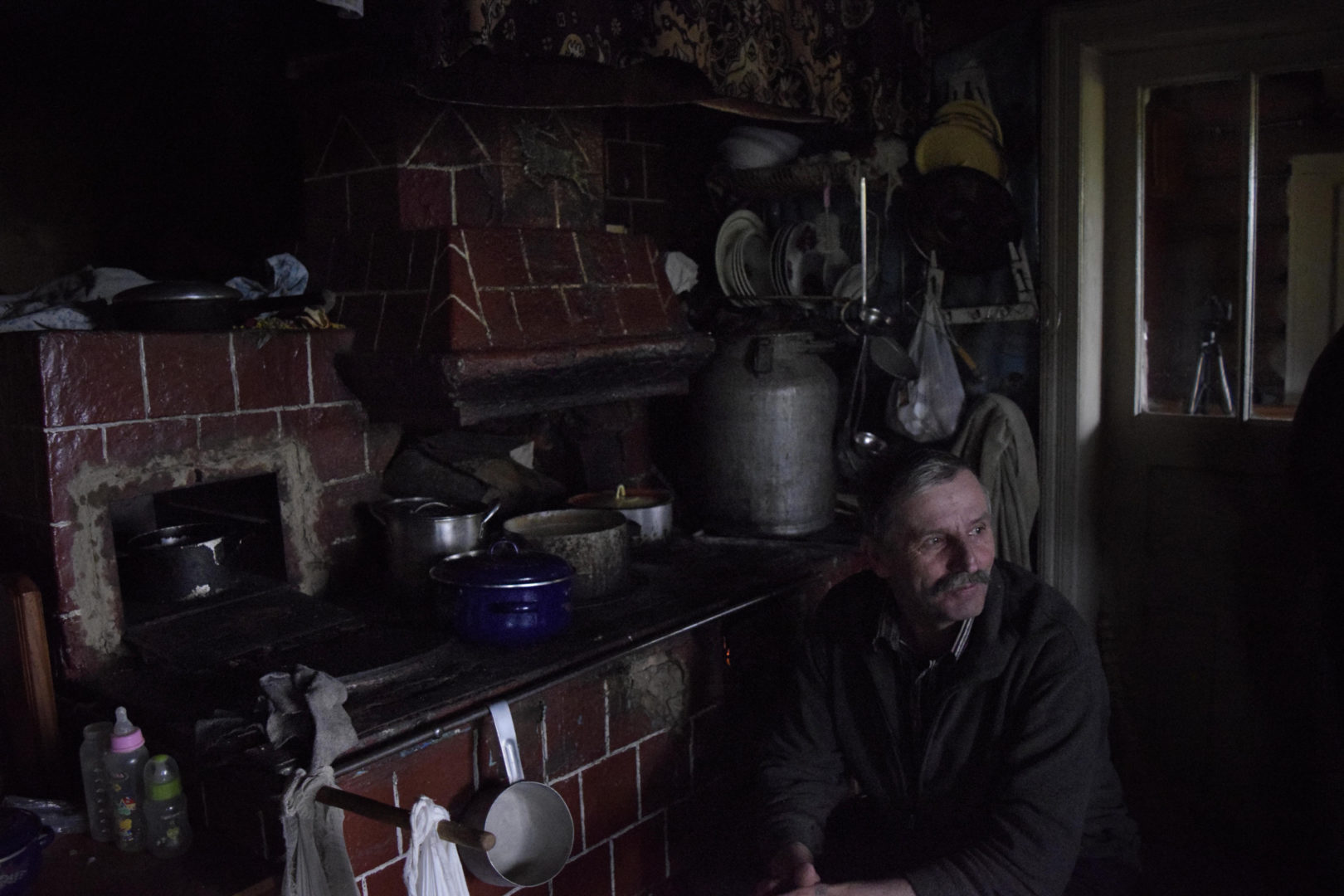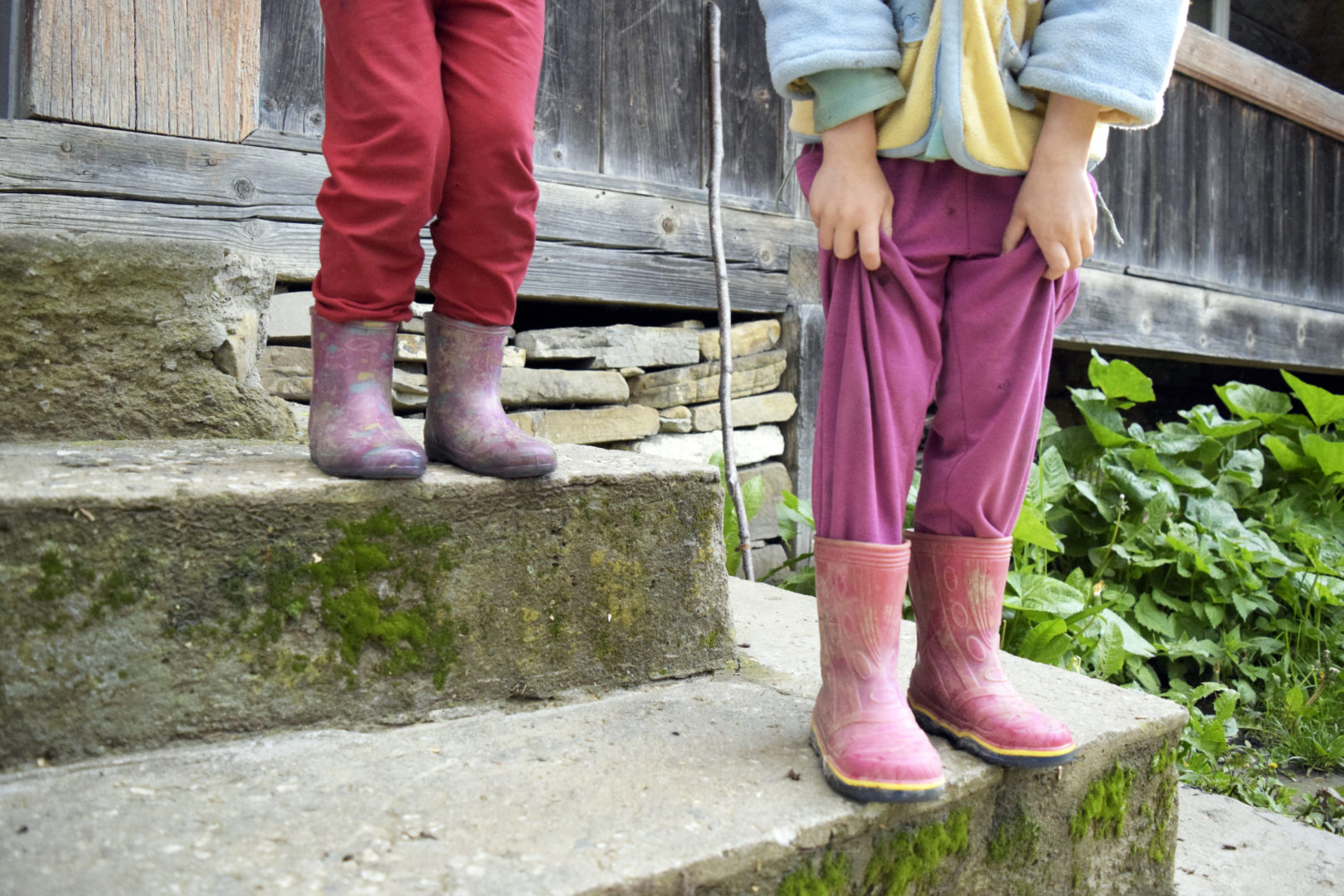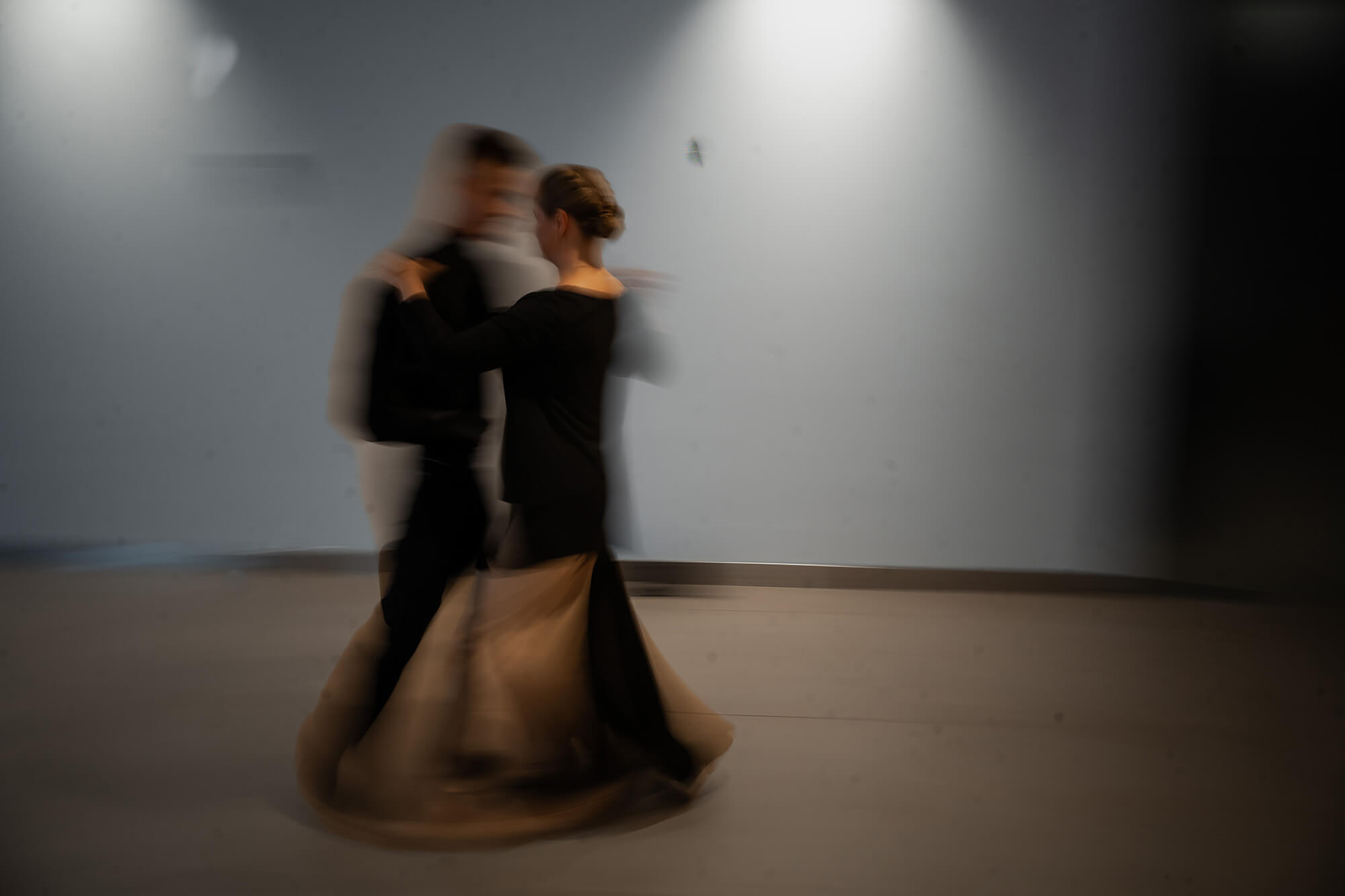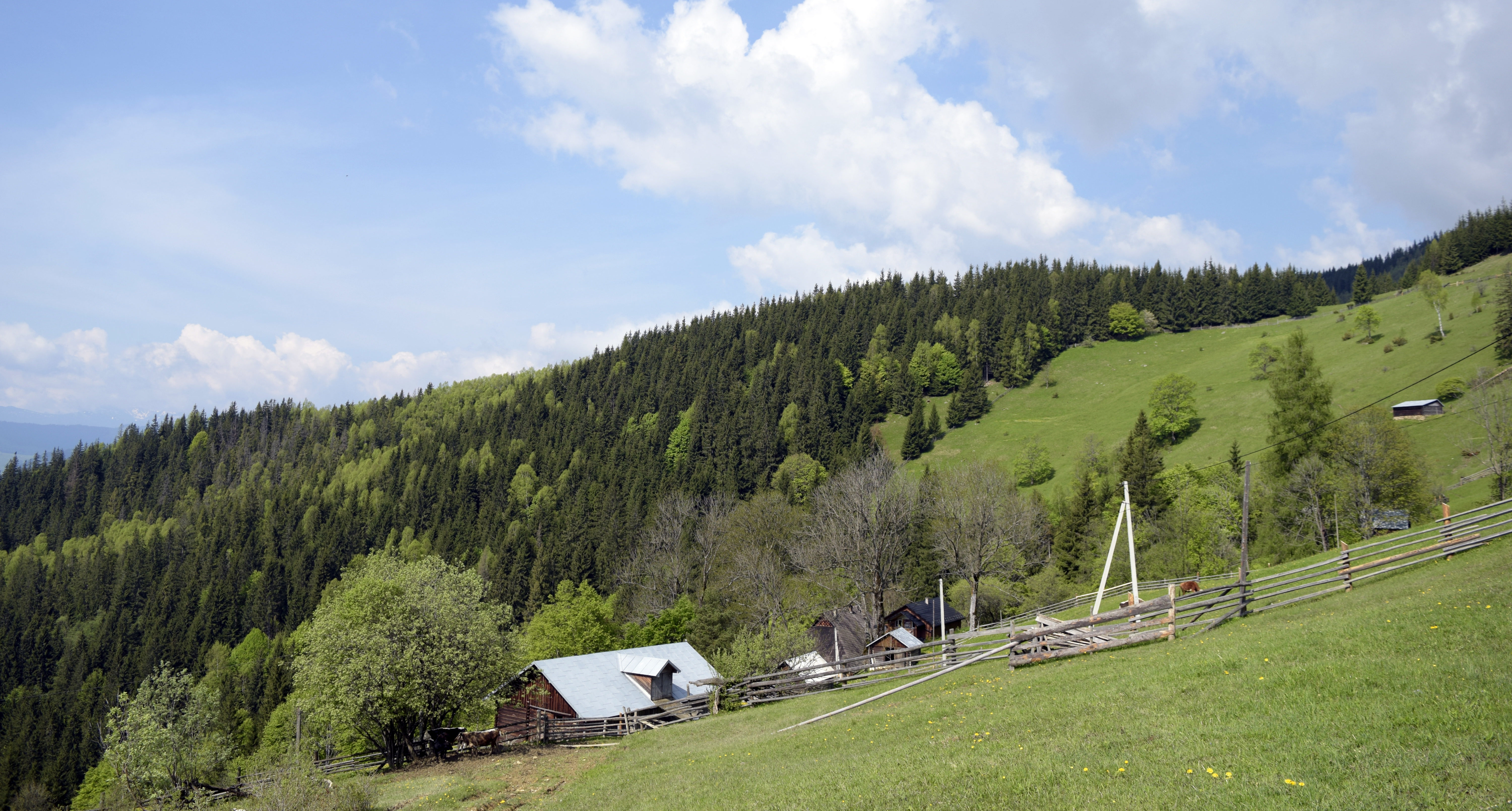
Life 1,300 meters high
If not for the light shining from a nearby home, Lyuba Marusyaik would feel completely alone.
Of course, that’s far from the truth. But Lyuba is also far from reality.
She lives with her mother, father, husband and child. She’ll be expecting another child soon, too. But the mountain in which the Marusyaik family lives creates an isolating existence. They have neighbors, but the closest one is still a 10-minute walk away.
But when Lyuba sees the light, she knows there are others out there.
That is, until her neighbor died a few years ago.
Now it is just Lyuba, her father Mykola, and her three children, Olesya, Lyuda and newborn Oksanka — three generations tethered together by Hutsul tradition.
With Mykola’s wife, Kalyna, recently deceased and Lyuba’s husband away in Poland, the father-daughter duo tend their land together, splitting the responsibility of husbandry, household management and childcare.
It’s a simple, yet isolating, life — their nearest neighbor now living on the opposite side of the mountain, a trip that pales in comparison to the three-kilometer climb from neighboring villages Bukovets and Kryvorivnya.
But Mykola and Lyuba find their life comfortable. Like their Ukrainian ancestors, the Marusyaik family lives in one of the last remaining hut grazhdas, a fortress-like home that was formerly used to house both animals and people.
For the family of five, it offers security and safety from the noise of the “outer world.”
While Lyuba left for a short stint to pursue her studies, she returned to the Carpathian Mountains when her mother fell ill — a homecoming she never planned nor expected while growing up.
“When I arrived in Ivano-Frankivsk, there was so much noise that I had a headache for two days. I love the most that feeling of freedom in the city,” Lyuba said. “Everyone knows your own job, everyone goes to their duties. But in the village it is not like that — everyone wants to know about everyone in the village”
But she doesn’t regret raising her children in the same hut grazhda that both she and her father grew up in.
“You can get used to everything. However, maybe when you arrive here, it will be more difficult to get used to than when you are born and grow up here,” Lyuba said. “When you grow up here it will be the opposite, you will be bored with it. You can think about how to escape from here.”
And that’s exactly what her two older siblings have done — escape.
“There is nobody to do this,” Lyuba said.
Tourists come often, especially in the summer months and largely in groups of 10 or more. Olesya and Lyuda are not shy either, the four and five-year-old happily running to the edge of the property to greet visitors upon each new arrival.
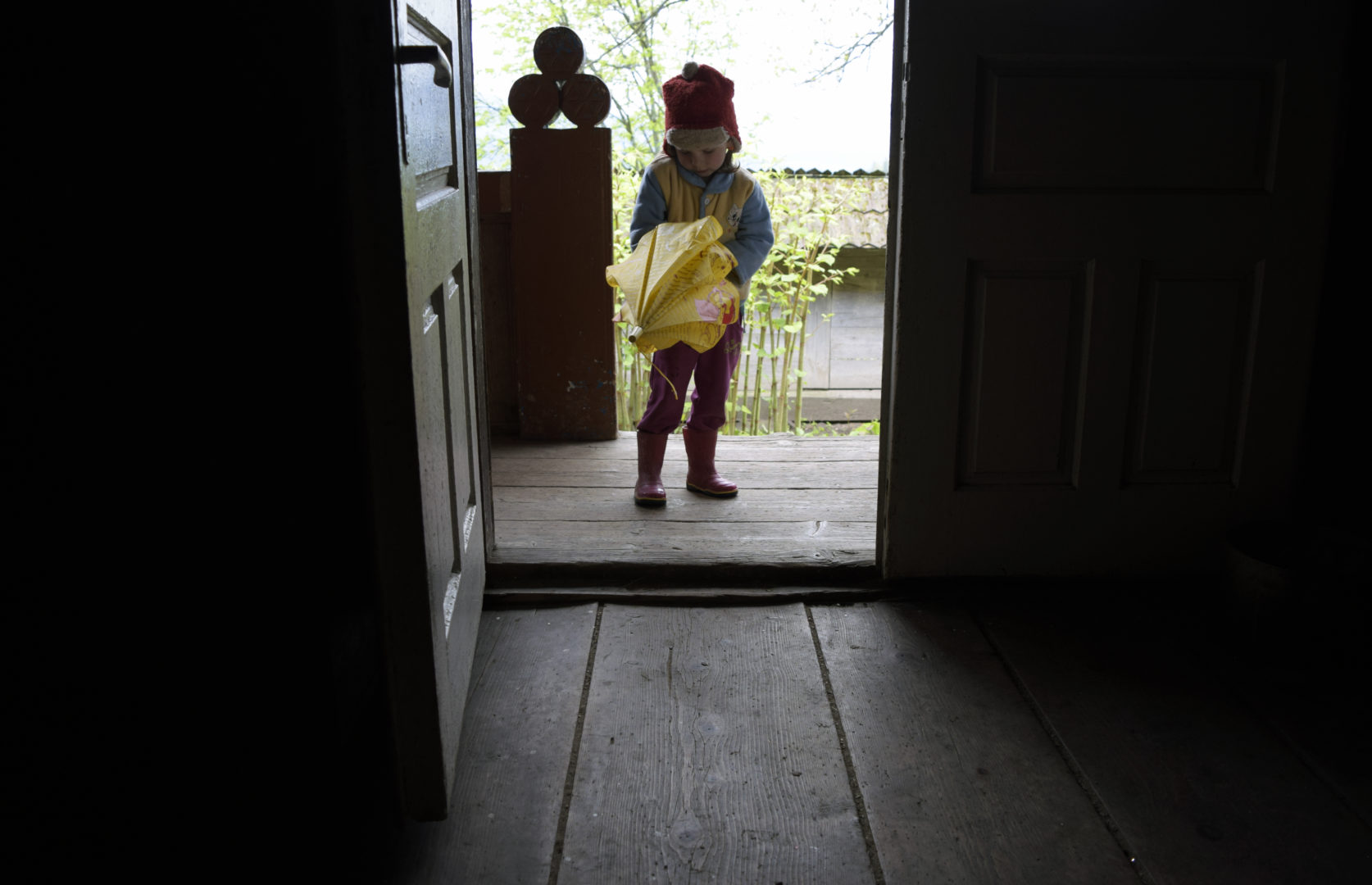
In a good year, the Marusyaik family could expect to host for up to eight months — the winter season offering treacherous conditions and up to 10 meters of snow.
Even so, winter is the calmest. There’s no need to milk the cows and all of their food, such as flour, sugar and potatoes, is shipped to the farm beginning in November. There are also rarely any visitors — a horse being only way to navigate the mountain’s rough terrain.
Yet, the Marusyaik family is not for display. What was once perceived as a regularity — because every villager tended to cows and sheep — has now become a scarce commodity, even to the locals.
The Marusyaik family exists not in service of curious Ukrainian visitors who want to learn more about their Hutsul heritage, but rather to preserving and passing on a lifestyle. They are Carpathian keepers of tradition.
Fostering tradition
Each day begins for Mykola and Lyuba in a similar fashion: milk the sheep at 6:30 a.m. Then, like clockwork, the sheep are released to graze the fields — walking themselves an upward of one kilometer per day. At 7 p.m. the sheep return by their own intuition, trained by a tight and repetitive schedule kept by Mykola.
In total, the Marusyaik family owns a multitude of cows, a horse and 50 sheep, 30 of which can provide milk. They once owned more sheep, but it grew difficult to feed them all and send them into the valley. Even now, it’s difficult to feed and manage the sheep as there is no shepard to directly care for them.
Yet, the Marusyaik family manages to make it work by selling cheese to tourists at a rate of 100 Ukranian hryvnia per kilogram, approximately $3.71 U.S dollars. They also sell wool at about 12 hryvnia per kilogram, one sheep offering two to four kilograms of wool.
But it is not a sustainable income. Because of this, Mykola and Lyuba also breed cattle — one bull sold providing anywhere between 7,500 to 15,000 hryvnia.
Even so, two years of raising a bull is comparative to working just one month in Poland, Mykola said.
But, despite the hardships, the farm is also family.
Kalyna’s grandfather, Mykola Mogoruk, built the hut grazhda in 1925. He originally tended to cows and sheep on the land, but in 1957 the U.S.S.R. turned the estate into a collective farm, a cooperative association of farmers who work land owned by the state but who own most of their own farm tools. After the fall of the Soviet Union in 1991, Mykola bought back the farm.
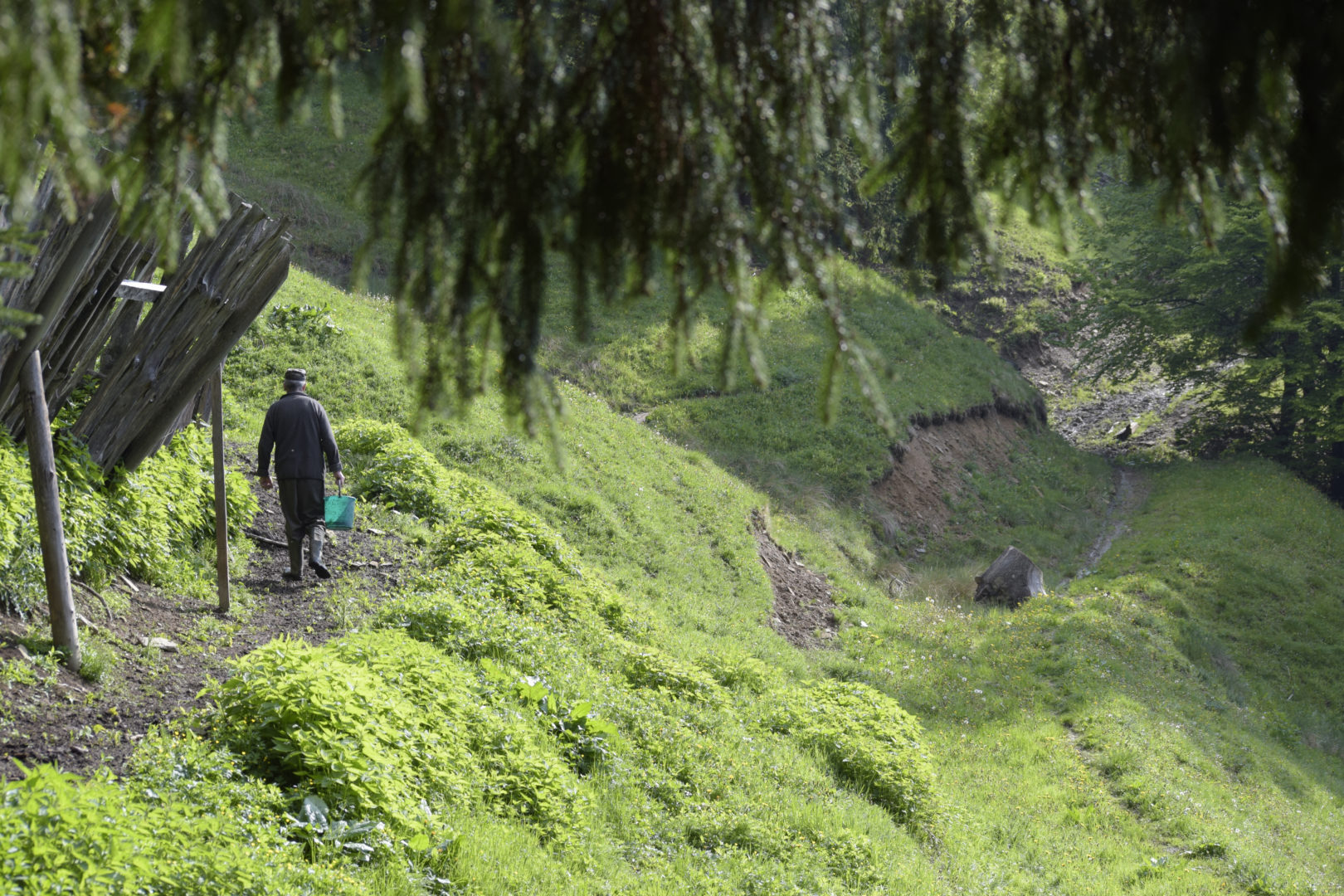
For him, city life isn’t something to strive for. He’s more comfortable staying home day-to-day, as he doesn’t understand why anyone would have to go anywhere.
“We have guests here,” Mykola said. “My sister lives in Biloberizka. Why go? It is an empty thing to do. There is no need.”
But, Mykola is empathetic of the need to travel and explore, especially for tourists. He recognizes that it is important for many of them to see the culture of their ancestors that the Marusyaik family represents.
“There are no hut grazhdas here,” Mykola said. “So, they go to ours”
And it’s not as if the Marusyaik family lives in the dark ages. They have cell phones and television, as well as access to the internet. Like everyone else, Mykola and Lyuba have the world at their fingertips — they just don’t have time for it.
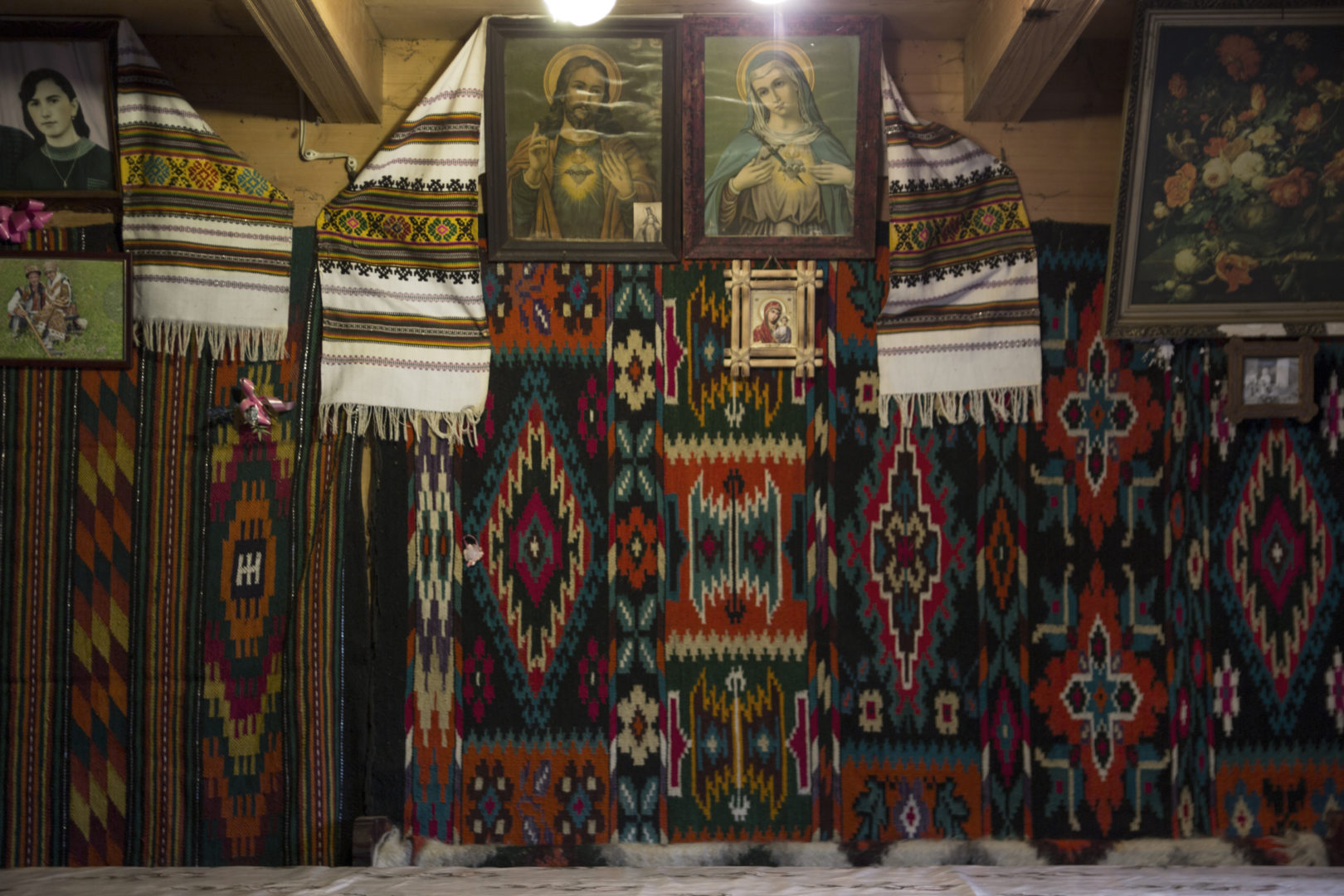
‘I’m at home’
As for the future of the farm, Mykola and Lyuba differ.
Mykola is optimistic. He believes his three grandchildren will continue the legacy of their lifestyle. They will attend a boarding school in a nearby village and return to the hut grazhda to raise sheep and cattle with children of their own.
Lyuba is less certain. Her siblings and husband have already fled the mountain — what is stopping her three daughters?
The farm itself is in stable condition. While the hut grazhda may need a new roof, the Marusyaik family have built the skeleton of a new house on the property that Lyuba and her children plan to live in.
“I will not go anywhere,” Mykola said, noting that he plans to continue living in the hut grazhda despite the fact that there are no indoor bathrooms and the home itself has been retrofitted to accommodate tourists rather than the family.
This is a point Lyuba can agree on.
“I can not say that I’m sorry,” she said. “I’m at home.”
Text: Alex Connor
Video, photo: Nadia Mykolaienko, Alex Connor
Audio: Natalia Bushtyn
Have read to the end! What's next?
Next is a small request.
Building media in Ukraine is not an easy task. It requires special experience, knowledge and special resources. Literary reportage is also one of the most expensive genres of journalism. That's why we need your support.
We have no investors or "friendly politicians" - we’ve always been independent. The only dependence we would like to have is dependence on educated and caring readers. We invite you to support us on Patreon, so we could create more valuable things with your help.
Reports130
More